
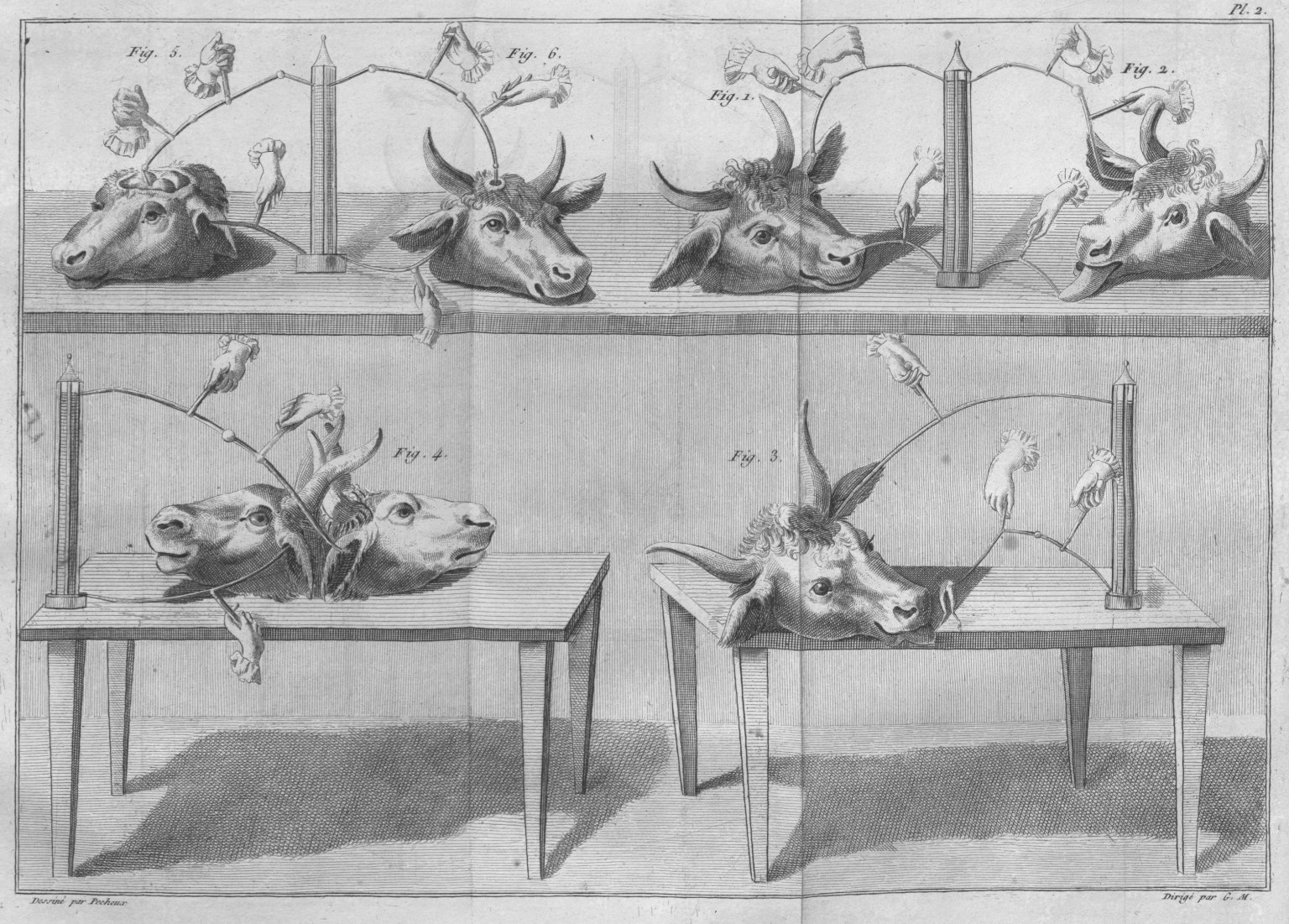
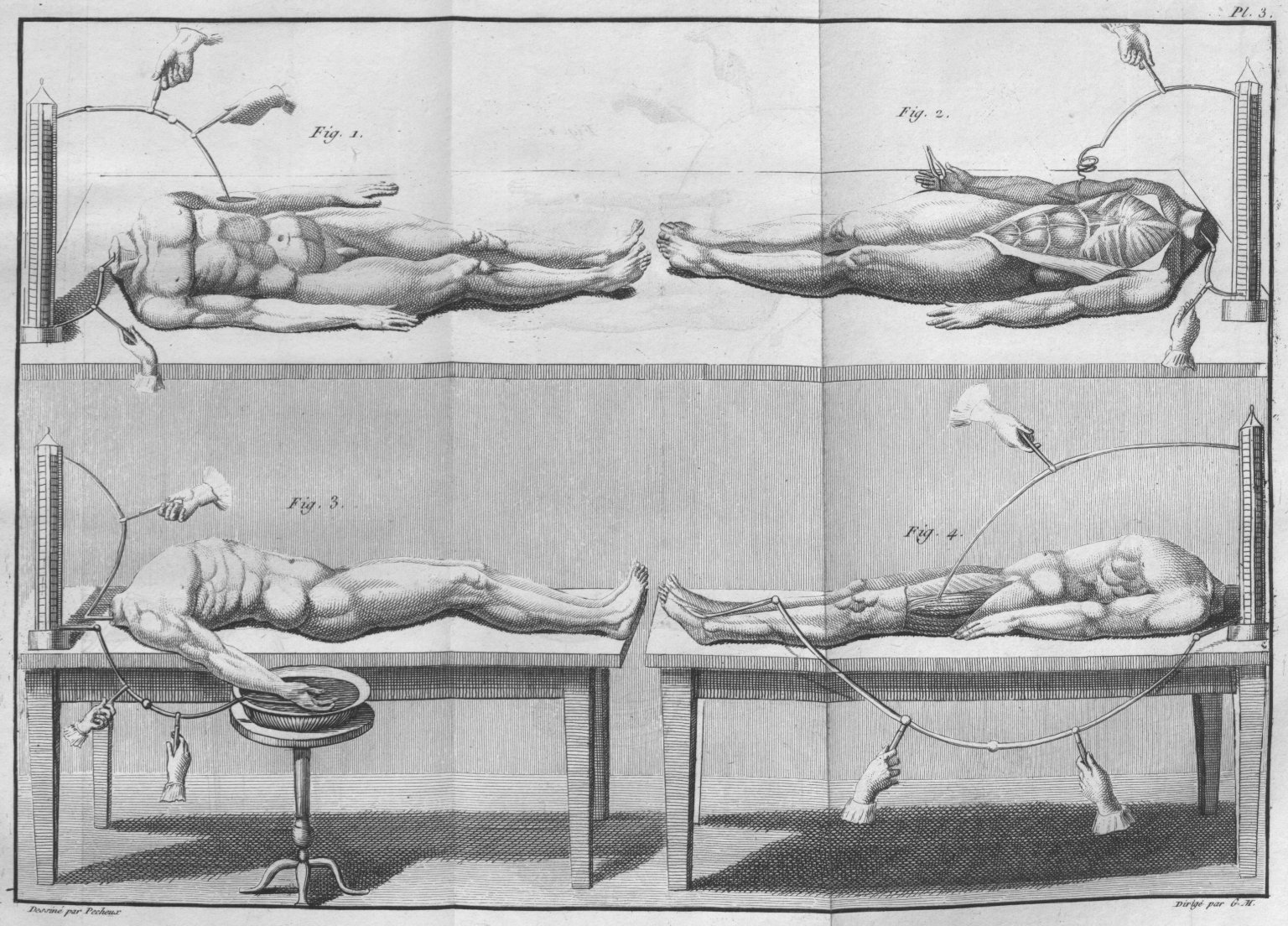
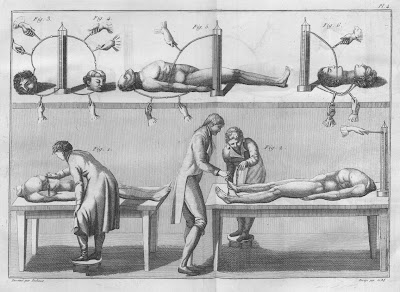


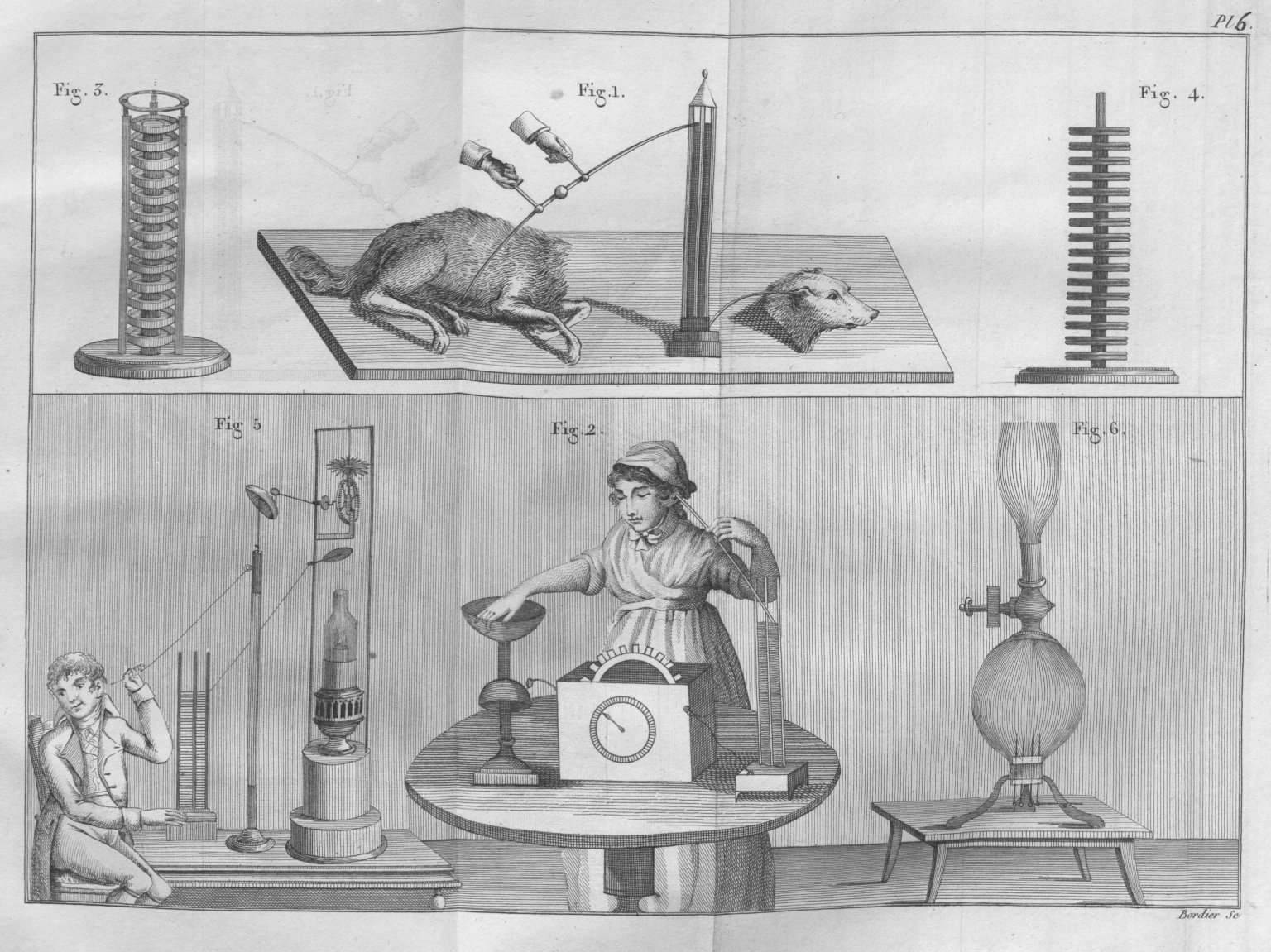
Among the inspirations for Mary Shelley's gothic classic 'Frankenstein' from 1818 were the (in)famous experiments carried out in public by the physicist Giovanni Aldini (1762-1834) at the Royal College of Surgeons in 1803.
Aldini was the nephew of the Italian physiologist Luigi Galvani who experimented with frog legs in the late 18th century and noted that the muscles contracted with the passage of an electrical current (he thought he had discovered a unique 'animal electricity'). Provoking muscle contraction by applying electricity came to be known as galvansim [and galvanize or galvanise came to have a wider meaning: stimulate into activity]. Aldini assisted with his uncle's work and later promoted the principle in his own experiments and publications.
"In January 1803, the body of the murderer George Forster was pulled from the gallows of Newgate Prison in London and taken to the Royal College of Surgeons. There, before an audience of doctors and curiosity-seekers, Giovanni Aldini, nephew of the late Luigi Galvani, prepared to return the corpse to life.These human and animal experiments with electricity came to be described by Aldini in his (now very rare) 1804 book 'Essai Théorique et Expérimental sur le Galvanisme' from which the above plates were taken. The work is also notable for first describing how steel needles could be magnetized with a current, as well as exploring the velocity of electricity through water, electrical fish and the conductivity of flames.
At least, that is what some of the spectators thought they were witnessing. When Aldini applied conducting rods, connected to a large battery, to Forster's face, "the jaw began to quiver, the adjoining muscles were horribly contorted, and the left eye actually opened". The climax of the performance came as Aldini probed Forster's rectum, causing his clenched fist to punch the air, as if in fury, his legs to kick and his back to arch violently." [continues at The Guardian]
The electrical work of Aldini was not restricted to attempts at reanimating human and animal corpses. Prior to his famous London showmanship, Aldini had some success treating hospital patients suffering from 'melancholia' by giving them a strong electric shock -- this was the first recording of electroconvulsive therapy, which for the most part has been used (with arguable but apparent success) up to modern times in certain cases of depression.
- All the above images come from the Division of Rare and Manuscript Collections at Cornell University (first link) which employs a Luna Insight browser. Strangely, the plates are not credited on the site to Giovanni Aldini at all, but can be found by searcing on 'Lavoisier' (name of collection in which the book resides). I saw in passing somewhere that there are 10 plates in the book in total but all of the Cornell images have been posted above.
- Corrosion Doctors: Giovanni Aldini; Luigi Galvani; Galvanism; Galvanic Reanimation.
- Dept. of History, University of California Irvine - Galvanic Experiments: Stories from The Times of London.
- Bibliography of Aldini's published works (search on 'Aldini').
- The Birth of Frankenstein at the National Library of Medicine.
- The Reanimators at Fortean Times.
- Galvanic Reanimation of the Dead at Lateral Science.
- [Extract from] 'A History of Nerve Functinons: from Animal Spirits to Moleular Mechanisms' by Sidney Ochs 2004.
- 'Giovanni Aldini (1803) and the Electrical Cure for "Melancholic Madness" ' by Sherry Ann Beaudreau and Stanley Finger [abstract from a lecture - search on 'Aldini'].
- In Spanish: A good weblog post at Psiquiatría Histórica on the history of biological treatments in psychiatry (illustrated).
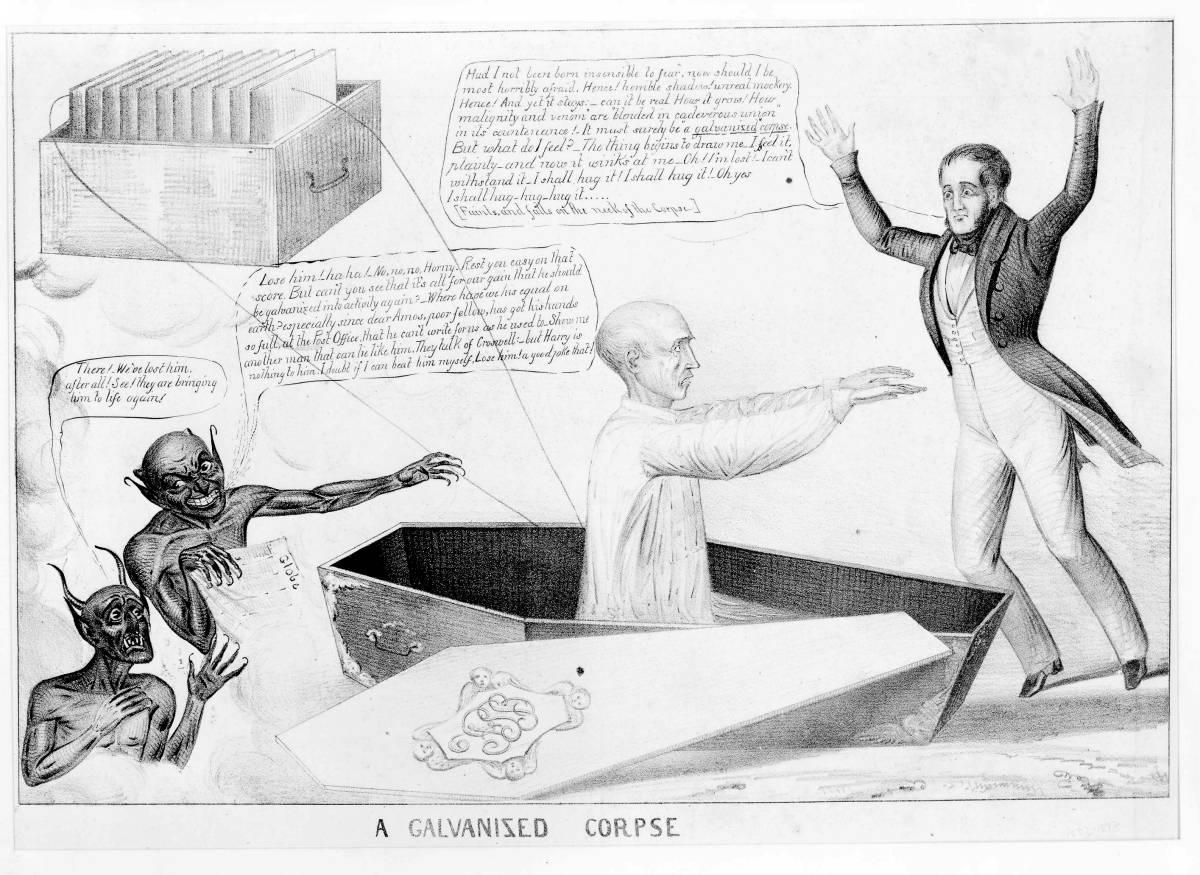
No comments:
Post a Comment